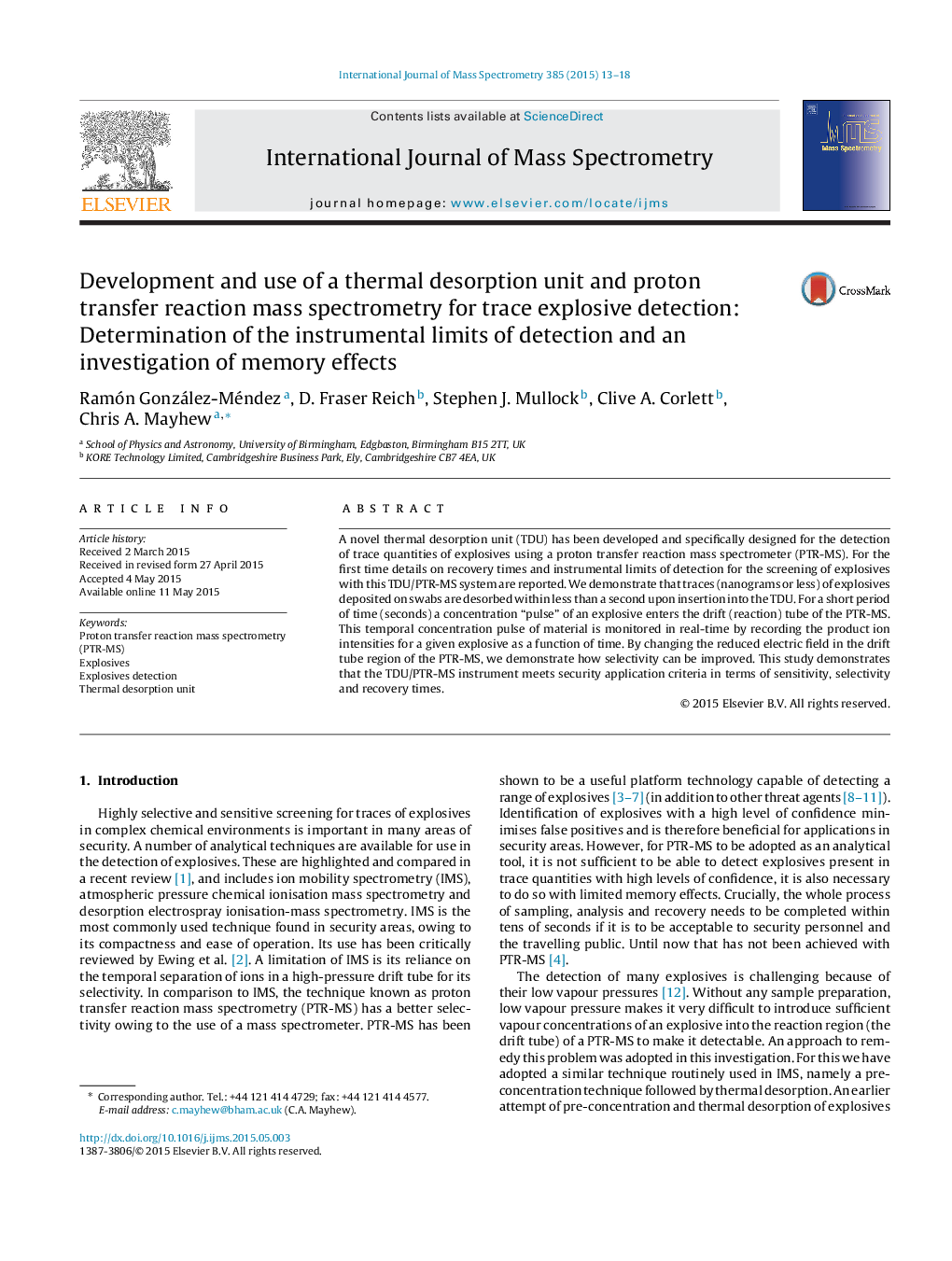| Article ID | Journal | Published Year | Pages | File Type |
|---|---|---|---|---|
| 1192065 | International Journal of Mass Spectrometry | 2015 | 6 Pages |
•Industrial–university collaboration developing a novel thermal desorption unit for use with proton transfer reaction mass spectrometer for trace explosive detection.•Excellent recovery times (memory effects) for many explosives – typically tens of seconds.•The first quantification of TDU/PTR-MS limits of detection for the screening of explosives comparable with IMS systems for most explosives investigated.•New data on the reactions of H3O+ with nitroglycerine, PETN and RDX.•Separation of compounds with the same nominal mass (i.e. TNT and NG).
A novel thermal desorption unit (TDU) has been developed and specifically designed for the detection of trace quantities of explosives using a proton transfer reaction mass spectrometer (PTR-MS). For the first time details on recovery times and instrumental limits of detection for the screening of explosives with this TDU/PTR-MS system are reported. We demonstrate that traces (nanograms or less) of explosives deposited on swabs are desorbed within less than a second upon insertion into the TDU. For a short period of time (seconds) a concentration “pulse” of an explosive enters the drift (reaction) tube of the PTR-MS. This temporal concentration pulse of material is monitored in real-time by recording the product ion intensities for a given explosive as a function of time. By changing the reduced electric field in the drift tube region of the PTR-MS, we demonstrate how selectivity can be improved. This study demonstrates that the TDU/PTR-MS instrument meets security application criteria in terms of sensitivity, selectivity and recovery times.
Graphical abstractFigure optionsDownload full-size imageDownload high-quality image (94 K)Download as PowerPoint slide
